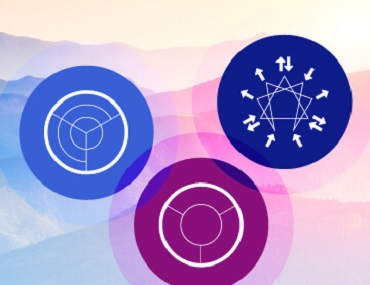Corporate organisations are increasingly becoming aware of the impact of stress on employee productivity, long-term health and engagement, and how this negatively affects the organisation’s ability to thrive in a competitive world.
Managing individual and organisational wellness is becoming essential for business success. Workplace stress is a leading health challenge, and organisations are struggling to create environments that offer a healthy work-life balance.
Scientific studies show that stress not only makes us feel bad emotionally but also worsens or increases the likelihood of conditions such as diabetes, depression, heart disease, asthma, anxiety, high blood pressure, and more, leading to increased absenteeism and lower engagement and productivity.
Addressing wellness as a corporate priority supports organisational benefits such as:
- Increased productivity
- Reduced work-related illness and injuries
- Less spend on workers’ compensation
- Improved employee relations
- A healthier work environment
- An enhanced corporate image
- Lower absenteeism and staff turnover
In this article, we review how the Enneagram was used to help a major organisation identify levels of stress and strain among employees and teams and how it can be applied to improve overall wellness.
The Enneagram and Wellness
The Enneagram is a powerful tool that is different from other personality or profiling tools as it goes beyond outwardly observable behaviour to explore what drives that behaviour, providing us with deep insights. These drivers include the motivations and beliefs that form our Type, as well as other aspects and facets of our personality. Each Enneagram (Ennea) Type has traps and pitfalls to be aware of, especially when the going gets tough. Ennea 8s, for example, tell themselves that they need to be strong and that they cannot show any vulnerability, driving themselves to work long hours. Similarly, Ennea 3s will not say that they are under pressure and frequently push themselves beyond their limits.
In addition to the Type’s unique challenges, the iEQ9 assessment also provides a stress and strain profile that offers a subjective reflection of how much strain an individual is currently experiencing. This includes six categories of strain, including vocational, psychological, physical and environmental, allowing coaches to focus on where strain is originating. Overall, High Strain levels indicate that the individual may feel the need to change but also may be experiencing burnout and therefore have a limited capacity to change.
A Wellness Case Study
The Company and its Challenges
One of our clients, a technology solutions provider, ran an extensive wellness intervention supported by the Enneagram. The company is a key player in providing high-value, end-to-end technology solutions to various clients throughout Africa. Since their initial listing on the stock exchange, they have shown excellent annual growth rates and deliver services that exceed customer expectations. The company has a robust brand and despite its size, is able to remain entrepreneurial. Anchored in a strong people-centered approach, the business operates according to a philosophy of focusing on people; attracting, developing, and retaining the best talent and great leaders.
The company’s exponential growth was fed by a series of acquisitions of small- to medium-size companies and family-owned businesses, growing from around 5 000 employees to 11 000 employees within a 10-year period. Constant change became a way of life and a reality that leaders and employees had to deal with daily. The business is challenged by the need to integrate different cultures, ways of working, and team dynamics as well as having to run the day-to-day operations and projects.
One of the strategic challenges was to create an overarching company culture. Each of the businesses that they acquired had its own culture and structure - requiring a way to integrate them into a bigger corporate structure while still retaining their own character. The Group HR Director wanted to establish a culture of empowering people, making an effort to really know their people, listen to them and build a people-centric approach. The business defined four principles to guide this company culture:
- The belief that ‘people make it happen’
- Ensuring that the business was ‘future ready’
- Establishing a coaching culture
- Empowering all their people through leadership
Business Challenges
The business had started to pick up trends throughout the organisation that raised red flags and prompted them to consider wellness interventions at a company level. These flags included a significant increase in absenteeism levels as well as ‘presenteeism’ where, due to tremendous work pressure, people were coming to work while sick, leading to productivity losses, poor health, and exhaustion. Over time, some staff suffered from burnout and change fatigue.
The business realised that if they continued to make acquisitions, they needed to build their capacity and empower people throughout the organisation to deal with the stress that goes hand-in-hand with rapid change. Supporting wellness initiatives and building resilience at team and individual levels were key strategies to achieve this.
Data Gathering and Analysis Phase
The company decided to take a data-driven approach to assess their current state of wellness, triangulating different sources of information to obtain the most accurate picture. This included existing data from the Employee Benefit and Employee Assistance Programmes, as well as the supporting tool of the iEQ9 Enneagram Reports.
The Internal Wellness Manager, an accredited Enneagram expert, saw an opportunity to leverage iEQ9 data to enrich psychological insight into this challenge. The iEQ9 was administered to a sample of 500 employees and the stress and strain profiles used to identify individuals, teams and levels in the organisation that were most affected or at risk. These findings correlated with company data to reveal that employees in the 20-29 age cohort showed the highest average stress and strain, double that of other age groups.
Supporting statistics from the Employee Benefits and Employee Assistance Programmes indicated that the majority of claims received were from employees in the 32 to 42 age cohort, including claims for cancer and anxiety that the company believed may be driven by stress left unresolved when these staff members were in their 20s.
Individual Coaching Journeys
The organisation embarked on a coaching programme focused on empowering employees to cope in the high-pressure environment. Employees who wanted to work with the Enneagram as part of their development journey were invited for 3 to 6 coaching sessions, which also addressed other issues flagged in the Employee Assistance Programme. Staff were encouraged to have a discussion with their line manager and include this in their Personal Development Plans and managers were encouraged to play an active role, providing sponsorship and support. Among other themes, the coaches focused on unpacking strain profiles with clients to understand the root causes of strain, with the aim of building resilience strategies unique to each individual.
The coaches found that different Enneagram Types faced specific wellness challenges. The Wellness Manager noted, for example, that stress and strain for Ennea 2s and Ennea 9s tended to be slightly more elevated than the other types, as they are not naturally inclined towards taking care of themselves and need to learn to be assertive in their own way. Ennea 8s usually report low strain; however this is not to say that they do not experience stress, they simply avoid being seen as weak and vulnerable. For example:
- For Lungi, an Ennea 2, it was essential to be strong and not to need help. She tended to suppress and sacrifice her own needs and found it challenging to say no or take time out to recover when sick or exhausted. Ennea 2s benefit from coaching that balances their independence and ability to prioritise their own needs while also making themselves available to others. Lungi needed to be encouraged to express her own feelings and thoughts and to be able to ‘flag’ a need for a time-out.
- Chris, an Ennea 9, became non-responsive to his immediate environment when he was stressed. He ignored his overwhelming feelings. While ignoring emotions, issues, and problems might bring some short-term benefits, this approach shields Ennea 9s from the opportunity to build resilience and create new, healthier behaviours. Chris’s coaching journey focused on him needing to explore how to tap into his emotions to energise himself.
- David, an Ennea 8, was displaying extraordinary toughness, both mentally and physically. He took a lot of strain without cracking or complaining; however, when under stress his default behaviour was to become aggressive. The coaching focused on balancing his excessive workaholism, big action efforts and, at times, withdrawn behaviour by introducing ‘pause’ or ‘slowness’. David had to learn not to take his health and stamina for granted, and to become aware of his own and others’ limitations.
Stress in Teams
The organisation also embarked on a series of Enneagram-based interventions to address wellness at a team level, consisting of coaching and workshops. Team workshops were positioned to create awareness of wellness and a platform where the team could communicate about these issues. Team coaching sessions offered a safe space to talk about behaviour through the language of the Types, empowering teams with enhanced awareness of the impact of their individual profiles when under stress.
The use of the Enneagram created a common language to speak about issues that had previously been no-go areas, building and strengthening collaboration. The sessions also explored how teams collaborate, manage their workload, and support each other’s wellness and self-awareness, helping embed individual learnings into the team’s daily routine.
Core themes were revealed in the series of team interventions, specifically conflict that would arise and play out in teams as a result of different Ennea types working together. For example, conflict between Ennea 1 and Ennea 7 can easily arise if Ennea 1s perceive Ennea 7s as not being loyal to the team, or if the Ennea 1s’ focus on detail makes the Ennea 7s feel underappreciated or that their work was wasted.
Impact of the Intervention
From a business perspective, the company continued its exponential growth approach, including restructuring and retrenchments. Growth figures continue to be around 40% even in economically demanding times. The wellness interventions based on the Enneagram prepared employees to be more resilient to cope with these changes. They were empowered with self-awareness around their own triggers and blind spots. The coaching journeys using the iEQ9 Reports and the Enneagram not only created self-awareness at an individual level but also built capacity to support their colleagues and teams. Overall, the organisation’s people developed an increased ability to cope with constant change, finding strategies and pathways to become more resilient in facing the future.
Achieving Organisational Health Starts with the Enneagram
The Enneagram offers both data gathering and development opportunities to build greater wellness by reflecting on sources of stress and helping us understand key behaviour patterns as they play out in times of high stress. If we engage in conversation with each other to understand these core drivers, we are better-equipped to understand the rationale behind what we do, and are armed with more insight to relate, not only to ourselves but also to others.
Want to Work with Teams and Organisations?
Sign up for our Level 2 Advanced Enneagram Team Dynamics Training.
REFERENCES
Workplace Stress. The American Institute of Stress Management
Employee Health and Business Success Making the Connections and Taking Action: Summary of the Global Findings of the 2015/2016 Staying@Work Survey.
Employee wellness is important to organisational success, but a strategic and integrated approach to wellness is critical: PwC analysis.

 What is the Enneagram?
What is the Enneagram?
 Introduction to the 27 Subtypes
Introduction to the 27 Subtypes
 Introduction to the 3 Centers
Introduction to the 3 Centers
 Wings
Wings
 Lines and Integration
Lines and Integration
 Enneagram History & Origin
Enneagram History & Origin
 Enneagram for Myself
Enneagram for Myself
 Enneagram for Practitioners
Enneagram for Practitioners
 Enneagram for Business
Enneagram for Business
 iEQ9 Individual Reports
iEQ9 Individual Reports
 iEQ9 Team Reports
iEQ9 Team Reports
 iEQ9 Questionnaire
iEQ9 Questionnaire
 Training Events
Training Events
 Level 1 iEQ9 Accreditation
Level 1 iEQ9 Accreditation
 Level 2 Enneagram Team Dynamics
Level 2 Enneagram Team Dynamics
 International Enneagram Conference
International Enneagram Conference
 iEQ9 Community of Practice Events
iEQ9 Community of Practice Events
 About Integrative9
About Integrative9
 Meet the Faculty
Meet the Faculty
 Testimonials
Testimonials
 Contact Us
Contact Us



